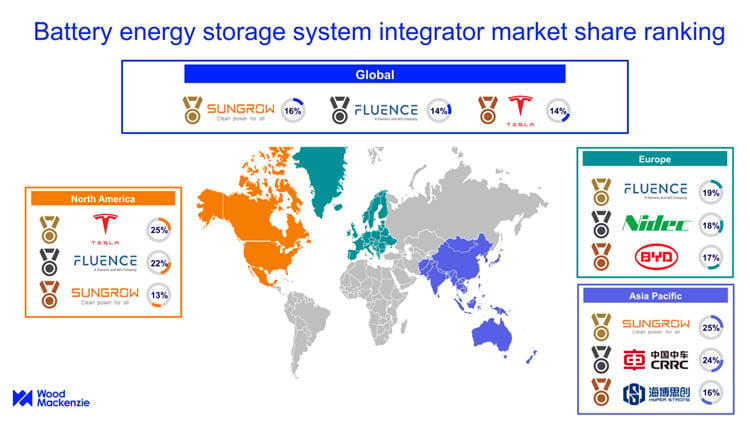Report on Global Renewable Energy Transition and Sustainable Development Goals
Recent United Nations reports indicate that the global transition to renewable energy has reached a critical “tipping point,” presenting a significant opportunity to advance the 2030 Agenda for Sustainable Development. This progress, particularly concerning SDG 7 (Affordable and Clean Energy) and SDG 13 (Climate Action), is marked by the increasing economic viability and widespread adoption of clean energy sources. However, substantial challenges remain in ensuring the transition is rapid, just, and equitable for all nations.
Key Achievements in Clean Energy Transition (SDG 7)
Growth and Adoption Statistics
The global energy landscape is undergoing a significant transformation, driven by the expansion of renewable technologies. This progress is a cornerstone for achieving universal access to affordable, reliable, and modern energy services.
- In the past year, 74% of the growth in global electricity generation was attributed to renewable sources like wind and solar.
- Renewables constituted 92.5% of all new electricity capacity added to the grid worldwide during the same period.
- The adoption of clean technology in transport is accelerating, with electric vehicle sales surging from 500,000 in 2015 to over 17 million in 2024, contributing to SDG 11 (Sustainable Cities and Communities).
Economic Viability and Investment
The economic case for renewables has strengthened, making clean energy a key driver for SDG 8 (Decent Work and Economic Growth). The declining costs and increasing investment signal a structural shift away from fossil fuels.
- The International Renewable Energy Agency (IRENA) identifies onshore wind, solar panels, and new hydropower as the three cheapest global electricity sources.
- Solar power is now 41% cheaper and wind power is 53% cheaper than the lowest-cost fossil fuel alternative.
- Investment in green energy reached $2 trillion last year, significantly outpacing investment in fossil fuels. As noted by United Nations Secretary-General Antonio Guterres, this trend heralds “an era where cheap, clean, abundant energy powers a world rich in economic opportunity.”
Challenges to a Global and Just Transition
Pace and Regional Disparities (SDG 10)
Despite remarkable progress, the pace of the transition is insufficient to meet climate goals, and its benefits are not being shared equally. This highlights a critical challenge to SDG 10 (Reduced Inequalities).
- The growth in renewables has been concentrated in developed nations and large economies such as China, India, and Brazil.
- Africa, despite its vast electrification needs, accounted for less than 2% of new green energy capacity installed last year.
- The high cost of capital for the Global South is identified as a primary barrier, preventing developing nations from achieving energy sovereignty without incurring unsustainable debt.
Systemic Barriers and Competing Demands
Several systemic issues hinder the acceleration of the clean energy transition, requiring concerted action on policy, finance, and infrastructure in line with multiple SDGs.
- Fossil Fuel Subsidies (SDG 12): Global subsidies for fossil fuel consumption amounted to $620 billion in 2023, nearly nine times the $70 billion allocated to renewables. This directly contradicts the aims of SDG 12 (Responsible Consumption and Production), which calls for the phasing out of inefficient fossil fuel subsidies.
- Increasing Energy Demand (SDG 9): Overall power demand continues to rise, driven by industrialization in developing countries and the growth of energy-intensive technologies like AI data centers. This underscores the need for innovation and sustainable infrastructure as outlined in SDG 9 (Industry, Innovation, and Infrastructure).
- Policy Inconsistencies (SDG 13 & SDG 17): Actions such as the United States’ withdrawal from the Paris Agreement and cuts to federal renewable energy programs undermine global climate efforts and the spirit of SDG 17 (Partnerships for the Goals).
Outlook and Call to Action
The reports conclude with a call for decisive action to overcome existing barriers. Secretary-General Guterres warned that “countries that cling to fossil fuels are not protecting their economies, they are sabotaging them.” The path forward requires a unified global effort focused on energy security, economic competitiveness, and climate resilience.
Recommendations for Stakeholders
- Major technology firms are urged to power data centers entirely with renewable energy by 2030 to mitigate their growing energy footprint.
- Developed nations and international financial institutions must address the high cost of capital to empower the Global South to build its own clean energy capacity.
- Governments must phase out fossil fuel subsidies and create policy environments that accelerate investment in renewables, ensuring a just transition that leaves no one behind.
While challenges are significant, the reports stress that a sustainable future is not only possible but inevitable if the global community seizes the current momentum. The tools and capacity to achieve SDG 7 and SDG 13 are available, offering a foundation for hope and concerted action.
Analysis of Sustainable Development Goals in the Article
1. Which SDGs are addressed or connected to the issues highlighted in the article?
The article on the global switch to renewable energy addresses several Sustainable Development Goals (SDGs) by focusing on energy transition, climate action, economic implications, and global inequalities.
- SDG 7: Affordable and Clean Energy: This is the most prominent SDG in the article. The entire text revolves around the growth of renewable energy sources like solar and wind, their increasing affordability compared to fossil fuels, and the goal of providing clean energy globally.
- SDG 13: Climate Action: The article explicitly links the shift to renewables as a primary strategy to “curb climate change.” It frames the failure to transition quickly as a risk and highlights policies like the Paris climate accord.
- SDG 9: Industry, Innovation and Infrastructure: The discussion on upgrading energy systems, the massive investment in green energy infrastructure, and the call for tech firms to power data centers with renewables directly relate to building resilient and sustainable infrastructure and promoting clean technologies in industry.
- SDG 10: Reduced Inequalities: The article points out the significant disparity in the adoption of renewable energy, noting that “The global renewables growth has been mostly in developed countries” while “Africa represented less than 2% of the new green energy capacity installed last year.” This highlights the inequality in access to technology and capital between the Global North and Global South.
- SDG 17: Partnerships for the Goals: The article discusses the role of international bodies (United Nations, IRENA), global investment flows, government subsidies, and calls for public-private partnerships (e.g., tech firms and renewable energy). It also touches upon policy coherence by contrasting the growth in renewables with the continued subsidies for fossil fuels.
2. What specific targets under those SDGs can be identified based on the article’s content?
Based on the issues discussed, several specific SDG targets can be identified:
-
Target 7.2: By 2030, increase substantially the share of renewable energy in the global energy mix.
- Explanation: The article’s core theme is the progress towards this target. It states that “74% of the growth in electricity generated worldwide was from wind, solar and other green sources” and “92.5% of all new electricity capacity added to the grid worldwide… came from renewables.”
-
Target 7.a: By 2030, enhance international cooperation to facilitate access to clean energy research and technology… and promote investment in energy infrastructure and clean energy technology.
- Explanation: The article highlights the need for this cooperation by pointing out that the “Global South must be empowered to generate its own electricity” and that progress is hindered by the “high cost of capital for the Global South.” The mention of “$2 trillion in investment in green energy” also directly relates to this target.
-
Target 13.2: Integrate climate change measures into national policies, strategies and planning.
- Explanation: The article provides a negative example of this target by mentioning that the Trump administration has “withdrawn the nation from the landmark Paris climate accord and cut many federal renewable energy programs.” This shows how national policy can either support or undermine climate action.
-
Target 9.4: By 2030, upgrade infrastructure and retrofit industries to make them sustainable…
- Explanation: The article discusses the transition away from the “fossil fuel age” to a “new energy era.” A specific call to action that aligns with this target is when UN Secretary-General Guterres “called on the world’s major tech firms to power data centers completely with renewables by 2030.”
-
Target 10.a: Implement the principle of special and differential treatment for developing countries…
- Explanation: The article underscores the need for this by highlighting the geographical imbalance in renewable energy adoption. The fact that “Africa represented less than 2% of the new green energy capacity installed last year despite having great electrification needs” points to the failure to adequately support developing nations in this transition.
-
Target 17.14: Enhance policy coherence for sustainable development.
- Explanation: The article points to a major policy incoherence. While the world is trying to shift to renewables, “fossil fuels getting nearly nine times the government consumption subsidies as they do.” It quantifies this by stating that in 2023, global fossil fuel subsidies were “$620 billion, compared to $70 billion for renewables.”
3. Are there any indicators mentioned or implied in the article that can be used to measure progress towards the identified targets?
Yes, the article provides several quantitative and qualitative indicators that can be used to measure progress.
- Share of renewable energy in electricity growth: The statistic that “74% of the growth in electricity generated worldwide was from wind, solar and other green sources” is a direct indicator for Target 7.2.
- Share of renewables in new capacity: The finding that “92.5% of all new electricity capacity added to the grid worldwide… came from renewables” is another strong indicator for Target 7.2.
- Investment in clean vs. fossil fuel energy: The article states there was “$2 trillion in investment in green energy, which is about $800 billion more than in fossil fuels.” This financial flow is a key indicator for Target 7.a.
- Cost-competitiveness of renewables: The report that “Solar power now is 41% cheaper and wind power is 53% cheaper globally than the lowest-cost fossil fuel” is an economic indicator of the viability and progress of renewables.
- Fossil fuel subsidies vs. renewable subsidies: The specific figures of “$620 billion” for fossil fuel subsidies versus “$70 billion for renewables” in 2023 serve as a direct indicator for Target 17.14 (related to official indicator 12.c.1), measuring policy incoherence.
- Adoption of sustainable transport: The growth in “sales of electric vehicles… up from 500,000 in 2015 to more than 17 million in 2024” is an indicator for the greening of infrastructure (Target 9.4).
- Geographical distribution of renewable energy installation: The fact that “Africa represented less than 2% of the new green energy capacity” is a clear indicator of the inequality mentioned in SDG 10.
4. Summary Table of SDGs, Targets, and Indicators
| SDGs | Targets | Indicators Identified in the Article |
|---|---|---|
| SDG 7: Affordable and Clean Energy | 7.2: Increase substantially the share of renewable energy in the global energy mix. |
|
| SDG 7: Affordable and Clean Energy | 7.a: Promote investment in energy infrastructure and clean energy technology. |
|
| SDG 9: Industry, Innovation and Infrastructure | 9.4: Upgrade infrastructure and retrofit industries to make them sustainable. |
|
| SDG 10: Reduced Inequalities | 10.a: Implement special and differential treatment for developing countries. |
|
| SDG 13: Climate Action | 13.2: Integrate climate change measures into national policies. |
|
| SDG 17: Partnerships for the Goals | 17.14: Enhance policy coherence for sustainable development. |
|
Source: apnews.com







